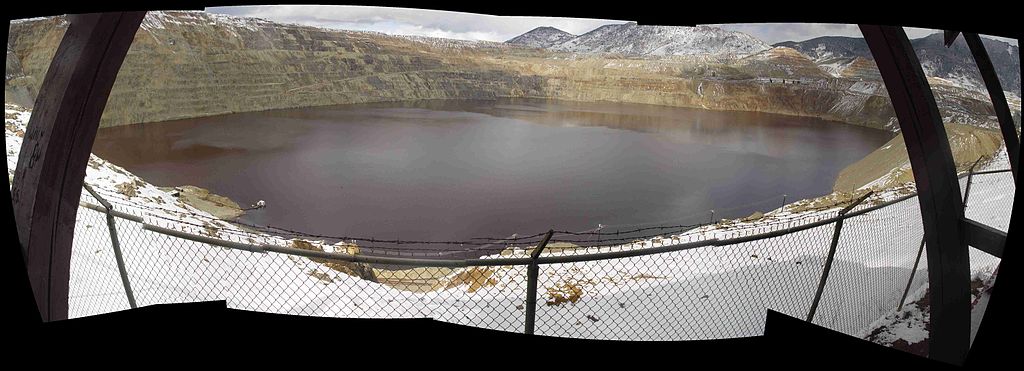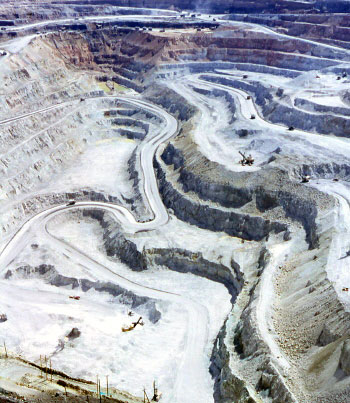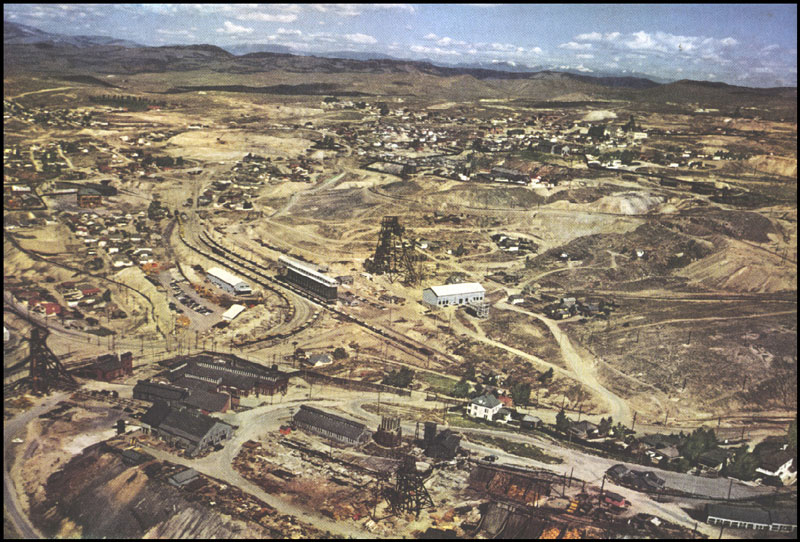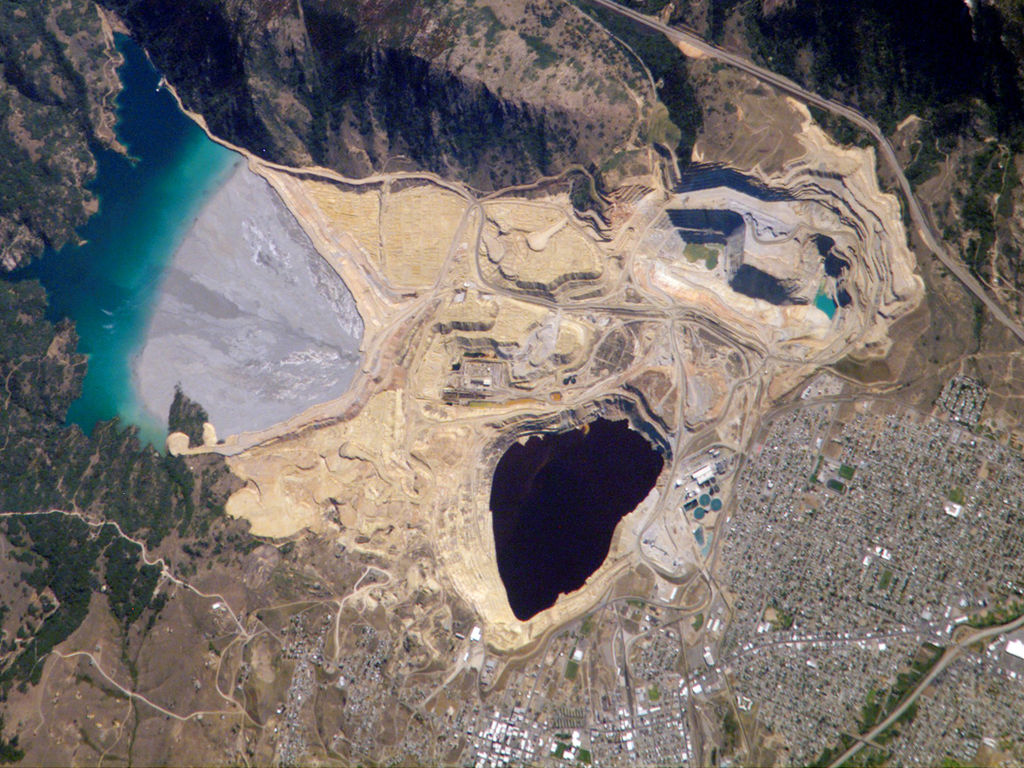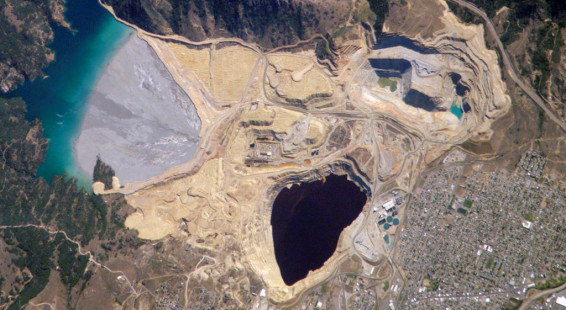
When most people think of Montana, images of mountains or “Big Sky country” or wildlife spring to mind. Usually you don’t think of a massive hole in the ground, but a destination of interest is the Berkeley Pit, a now closed open-pit copper mine in the historic town of Butte.
By the end of the 19th century, mines around Butte had yielded a lot of gold, silver and copper, earning the town the nickname, “richest hill on earth”. As electricity demand across America increased and more wiring was needed, the growing demand for copper made Butte a boom-town in the early 20th century. Copper mining in Butte historically had required a complex network of underground drains and pumps to lower the groundwater level, allowing continued extraction of copper (and other minerals like gold and silver). The water from these mines was so rich in copper sulfate that it was “mined” by precipitating the copper within the water.
In 1955, copper mining expanded from underground tunneling to an open pit mine with the development of the Berkeley pit. The pit kept growing and growing, and in time consumed several neighborhoods in East Butte. The Berkeley Pit mine took advantage of the existing pump network to lower groundwater and provide further access to minerals.
Approximately 320 million tons of ore and over 700 million tons of waste rock were mined from Butte Hill. The pit was excavated in a series of spiraling levels, to a depth of about 1,780 ft deep, and is more than a mile wide and a mile long. The Berkeley Pit and Butte mines have produced more than enough copper to pave a four-lane highway four inches thick from Butte to Salt Lake City.
In 1982, a new owner suspended operations at the Berkeley Pit. The pumps (3800 feet underground) were shut off and water from the surrounding land began seeping into the pit. Water has progressively filled the hole and is still continuing to rise, about 10-12 feet a year. This water is contaminated and discolored by a high concentration of minerals (e.g. copper, zinc). It is estimated than some 40,000,000,000 gallons of water sit in the pit. The pit water is acidic (pH of 2.5, comparable to vinegar), toxic and lifeless except for some bacterial microorganisms than can live in this mineral rich environment.
The Berkeley Pit is now managed as a federal Superfund environmental cleanup site because if the rising water level continues, it threatens the drinking water supply of Butte. A water treatment plant is being built at the site to pump out and purify the water before the levels get dangerously high, so the town’s water table should be okay.
You enter the observation deck of the pit through a small booth/gift shop, pay $2.00, and walk down a rather sterile white tunnel to view the pit from an elevated platform. It is a memorable site. Beautiful in a way; ugly in another way. The pit is a truly massive hole!
This aerial image at the top of this post (courtesy NASA) shows many features of the mine including the terraced levels and access roadways of the open mine pits. A large gray tailings pile of waste rock and an adjacent tailings pond appear to the north of the Berkeley Pit. The town sits to the right of the pit.


